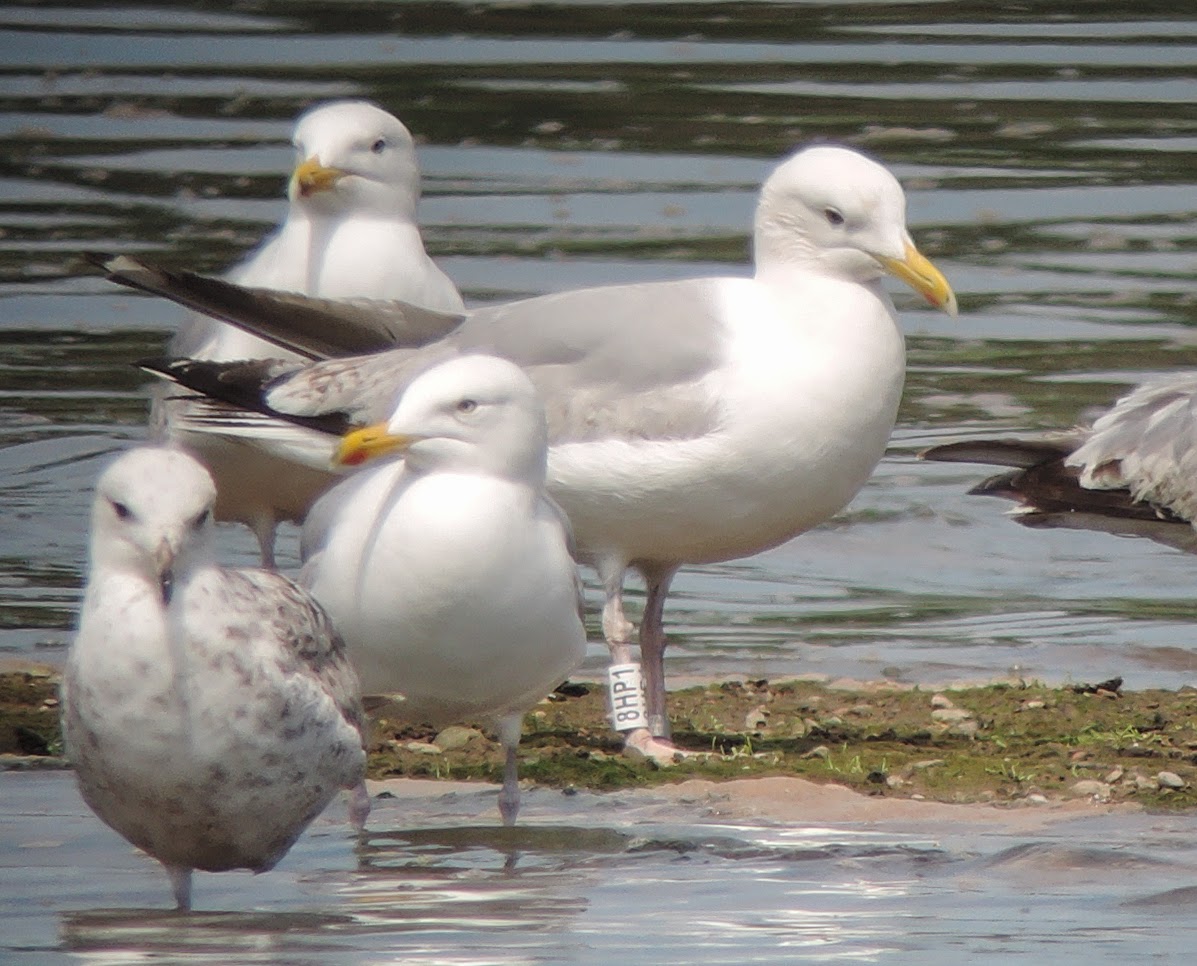2014 was a good birding year for the patch with 149 species seen, comparing to last year's 158.
The highlights of the winter were
Glaucous Gull,
Iceland Gull and
Yellow-legged Gull all on the estuary, and the returning male
Scaup on Decoy. The
Bonaparte's Gull made a few brief visits to Teignmouth, and two
Black-necked Grebe on Decoy was an amazing record. There was also a scattering on
Black Redstarts around the patch.
 |
| Glaucous Gull by Lee Collins |
Two
Bee-eaters provided the most excitement in Spring with one over Teignmouth and one over the Penn Inn roundabout.
Arctic Tern and
Balearic Shearwater were seen on seabird passage, an
Osprey flew over Teignmouth, and a locally rare brief sighting of a single
Sanderling was at Passage House. Again good numbers of
Wheatears were on the racecourse.
 |
| Wheatear |
In Summer, a
Chough, probably the same on also seen in east Devon, was seen at Shaldon, a
Red Kite was seen over Kingsteignton, and a
Great White Egret flew out of the estuary and over Teignmouth, the first record for the patch. A
Mandarin and a
Goosander were at Newton Abbot town quay and a juvenile
Yellow-legged Gull was at Passage House. A
Green Sandpiper was also seen at the Kingsteignton clay pits.
 |
| Yellow-legged Gull |
A
Curlew Sandpiper at Flow Point provided the wader highlight for the Autumn.
Firecrest,
Whinchat and
Redstart were all seen on return passage with a count of eight Whinchat on the racecourse being a site record. An
Osprey was seen on the estuary which perched at Netherton Point. Autumn seabird passage contained large numbers of
Pomarine Skuas with the highest day count being 37. Two
Little Gulls were also seen offshore along with a
Merlin. The
Scaup made it's return on the 5th October.
 |
| Scaup |
The
Ring-billed Gull that was briefly at Passage House provided the highlight to the end of the year with the only other birds of note being two
Jack Snipe also at Passage House and two
Black Redstarts in Teignmouth.
 |
| Ring-billed Gull |



















































